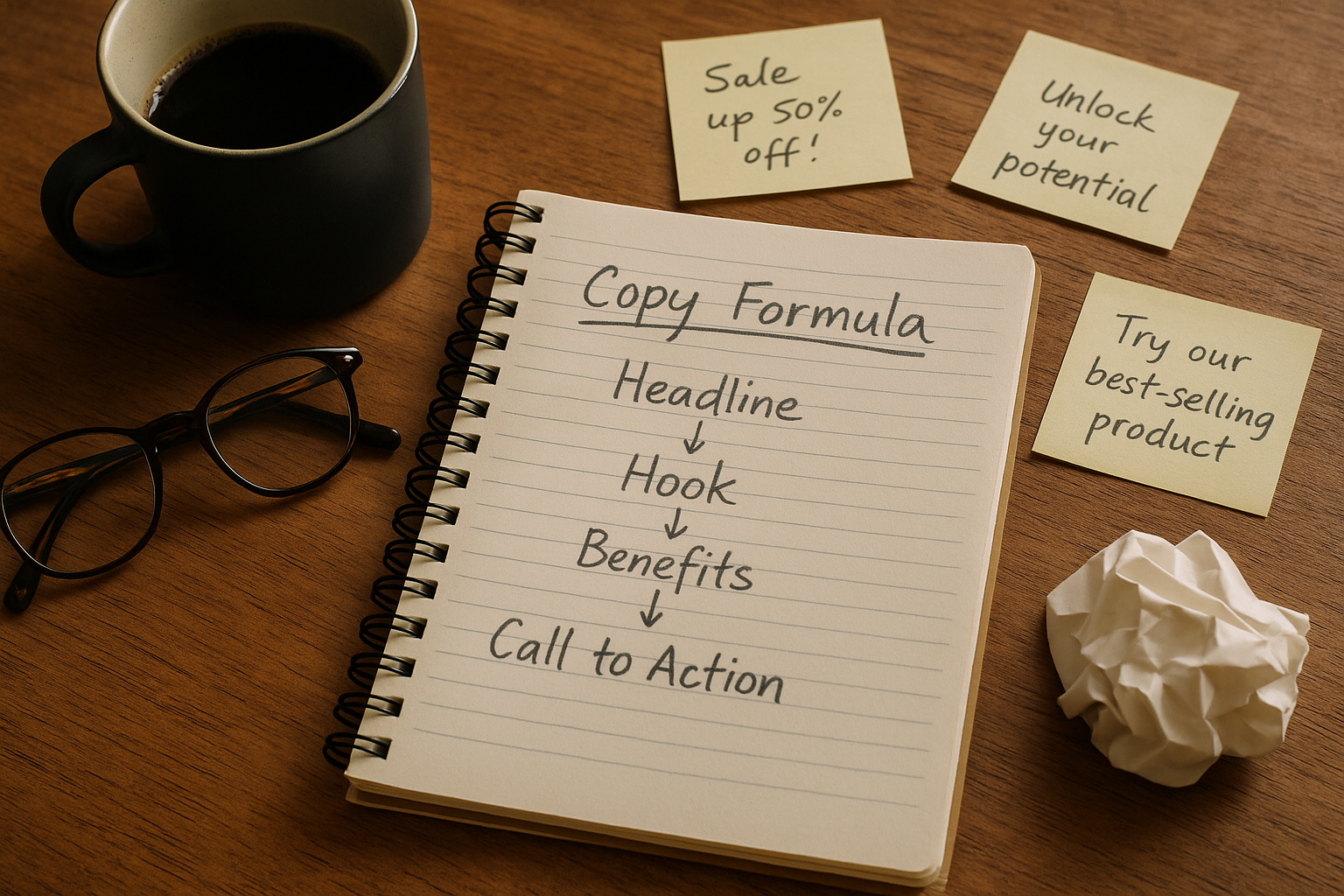Introduction
You don’t need to be a wordsmith to write high-converting product copy—you just need a formula. In fact, some of the most successful e-commerce brands rely on a small set of proven frameworks to drive clicks, engagement, and sales. In this post, we’re breaking down five essential copywriting formulas that turn product features into conversion-ready content, with real examples tailored for online stores.
Formulas remove the guesswork—giving e-commerce brands a repeatable way to write copy that connects, persuades, and sells.

1. AIDA – Attention, Interest, Desire, Action
The AIDA formula is a classic for a reason. It mirrors the customer journey, making it perfect for e-commerce landing pages and ads. Here’s how it breaks down:
- Attention: Grab the shopper’s attention with a bold headline or striking product image.
- Interest: Share a compelling detail—like a unique feature or limited-time benefit.
- Desire: Create emotional pull by showing how the product improves life or solves a pain point.
- Action: Prompt with a clear CTA like “Shop Now” or “Try Risk-Free.”
Example: “Tired of restless nights? Our ergonomic memory foam pillow adapts to your body for deeper sleep—risk-free for 60 days.”
2. PAS – Problem, Agitation, Solution
PAS is a go-to for email campaigns and product detail pages. It positions the product as the answer to a very specific customer problem.
- Problem: Identify a pain point that your audience experiences.
- Agitation: Emphasize the cost, frustration, or emotional toll of that problem.
- Solution: Introduce your product as the remedy.
Example: “Your phone dies halfway through the day. You scramble for chargers or miss important calls. With our 10,000mAh power bank, you stay powered up all day—no stress, no outlets needed.”
3. FAB – Features, Advantages, Benefits
FAB helps brands shift from simply listing features to showing how those features translate into real-world value.
- Feature: What your product does.
- Advantage: Why that feature is better than alternatives.
- Benefit: How it makes the customer’s life easier or better.
Example: “Our stainless steel water bottle (feature) keeps drinks cold for 24 hours (advantage), so you stay refreshed all day on the go (benefit).”
4. Before – After – Bridge
This formula paints a transformation—ideal for storytelling and social ads. It hooks the reader by showing what life looks like before and after your product, then builds the bridge.
- Before: Describe the problem or situation without the product.
- After: Paint a picture of the ideal outcome.
- Bridge: Show how your product makes that change possible.
Example: “Before: Your skin feels dry and irritated by noon. After: You enjoy hydrated, glowing skin all day. Bridge: Our lightweight moisturizer locks in moisture without clogging pores.”
5. 4Cs – Clear, Concise, Compelling, Credible
The 4Cs work best as a checklist for editing your copy. Run every piece of content through this lens:
- Clear: Is the message easy to understand?
- Concise: Have you removed filler or repetition?
- Compelling: Does it speak to a need, want, or value?
- Credible: Are claims supported by facts, reviews, or guarantees?
Example: “Over 10,000 customers trust our eco-friendly laundry detergent to clean tough stains—without harming the planet.”
Final thoughts
Great copy doesn’t start with creativity—it starts with structure. Whether you’re launching a new product or fine-tuning your abandoned cart email, these five formulas give your brand a messaging toolkit you can return to again and again. The result? Clearer content, stronger calls to action, and a smoother path to purchase.






